
ATOMIC ENERGY
Scope & Guideline
Shaping the future of energy through atomic insights.
Introduction
Aims and Scopes
- Nuclear Reactor Technology and Design:
Research on the design, operation, and optimization of various types of nuclear reactors, including thermal, fast, and fusion reactors. This includes studies on fuel composition, reactor dynamics, and safety features. - Radiation Safety and Environmental Impact:
Investigations into the effects of radiation on the environment and human health, focusing on safety protocols, radioactive waste management, and the assessment of radiation exposure. - Nuclear Fuel Cycle and Waste Management:
Exploration of the entire nuclear fuel cycle, including uranium extraction, fuel fabrication, spent fuel reprocessing, and long-term waste disposal strategies. - Advanced Nuclear Technologies:
Development and application of cutting-edge technologies such as digital twins, artificial intelligence in nuclear processes, and advanced materials for reactor components. - Simulation and Computational Methods:
Utilization of computational models and simulations to predict reactor behavior, assess safety, and optimize processes in nuclear facilities. - Hydrogen Production and Nuclear Energy Integration:
Research into the role of nuclear energy in hydrogen production and its integration into renewable energy systems, contributing to sustainable energy solutions.
Trending and Emerging
- Digitalization and Smart Technologies in Nuclear Energy:
There is an increasing focus on the application of digital twins, artificial intelligence, and data analytics in nuclear energy systems, enhancing operational efficiency and safety. - Accident-Tolerant Fuels and Advanced Reactor Designs:
Emerging research on accident-tolerant fuels and innovative reactor designs, including small modular reactors and advanced cooling technologies, is gaining traction as the industry seeks to improve safety and efficiency. - Sustainable Nuclear Fuel Cycles:
The exploration of sustainable practices within the nuclear fuel cycle, including advanced reprocessing techniques and the use of alternative fuels, is becoming a significant area of interest. - Nuclear Energy's Role in Decarbonization:
Research is increasingly highlighting the potential of nuclear energy in achieving global decarbonization goals, particularly through its integration with renewable energy sources. - Enhanced Safety Protocols for New Reactor Technologies:
There is a notable trend towards developing and implementing enhanced safety protocols tailored for next-generation reactor technologies, focusing on resilience against external threats and operational safety.
Declining or Waning
- Traditional Nuclear Reactor Safety Practices:
Research focused solely on conventional safety practices for older reactor designs has diminished as newer technologies and safety protocols have emerged, leading to a shift towards more innovative safety solutions. - Basic Radiation Detection Techniques:
The frequency of studies centered on basic radiation detection methods has decreased, possibly due to the advancement of more sophisticated detection technologies and methodologies. - Historical Analysis of Past Nuclear Incidents:
While still relevant, the frequency of papers analyzing historical nuclear accidents has waned as the focus shifts towards proactive safety measures and future technologies rather than retrospective analyses. - Low-Level Waste Management:
Research specifically targeting low-level radioactive waste management has seen a reduction, as the field has evolved to encompass broader and more complex waste management strategies. - Conventional Uranium Mining Techniques:
Research on traditional uranium extraction methods is declining as interest grows in alternative fuel sources and more sustainable mining practices.
Similar Journals
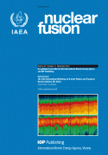
NUCLEAR FUSION
Empowering the scientific community through rigorous scholarship.NUCLEAR FUSION is a prestigious academic journal published by IOP Publishing Ltd, dedicated to advancing the field of nuclear and high-energy physics. With a significant impact factor and recognized among the top-tier journals, it boasts a Q1 ranking in both Condensed Matter Physics and Nuclear and High Energy Physics as of 2023. This journal, which has been published continuously since 1969, serves as a vital platform for researchers, professionals, and students exploring the latest advancements in fusion energy, plasma physics, and the intricate phenomena associated with high-energy states of matter. By disseminating original research, comprehensive reviews, and interdisciplinary studies, NUCLEAR FUSION strives to foster innovation and collaboration in pursuit of sustainable energy solutions, contributing significantly to the scientific community’s understanding of nuclear fusion processes. While the publication offers access options that enhance its reach, its rigorous peer-review process ensures the highest quality of scholarly communication.

ATW-INTERNATIONAL JOURNAL FOR NUCLEAR POWER
Catalyzing Progress in Nuclear Power TechnologyATW - International Journal for Nuclear Power is a premier journal dedicated to advancing the understanding and application of nuclear technology within the energy sector. Published by INFORUM Verlags-Verwaltungsgesellschaft mbH, this esteemed publication provides a platform for researchers, professionals, and students to disseminate cutting-edge research, practical applications, and critical analyses related to nuclear power generation. Although it has discontinued coverage in Scopus since 2012, its long-standing contributions to the field since 1996 underscore its significance and relevance. The journal aims to bridge the gap between theoretical insights and real-world applications, ensuring that stakeholders are well-informed on the latest trends, safety protocols, and innovations in nuclear power. With a commitment to fostering knowledge dissemination and collaboration, ATW continues to be an essential resource for anyone involved in the nuclear energy landscape.

Nuclear Materials and Energy
Pioneering Research for Sustainable Energy SolutionsNuclear Materials and Energy is a premier open-access journal published by Elsevier, dedicated to the dynamic fields of nuclear science and materials engineering. Since its inception in 2015, the journal has made significant strides in disseminating cutting-edge research, establishing itself as a vital resource for researchers and professionals alike. With a commendable impact factor and ranked in the Q2 category for both Materials Science (miscellaneous) and Nuclear and High Energy Physics, and impressively in Q1 for Nuclear Energy and Engineering in 2023, Nuclear Materials and Energy stands out in the academic community. This journal aims to bridge the gap between fundamental research and practical applications, promoting innovative solutions in the efficient utilization of nuclear materials and energy technologies. Open access since 2015, the journal ensures wide dissemination and accessibility of crucial findings, making it an essential platform for advancing knowledge and fostering collaboration in these pivotal fields.
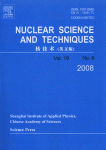
Nuclear Science and Techniques
Empowering Discoveries in Nuclear Physics and EnergyNuclear Science and Techniques is a distinguished peer-reviewed journal published by Springer Singapore Pte Ltd, dedicated to advancing the fields of nuclear science and engineering. With an impressive impact factor reflected in its 2023 quartile rankings—Q2 in Nuclear and High Energy Physics and Q1 in Nuclear Energy and Engineering—the journal serves as a vital resource for researchers, professionals, and students alike. Covering a breadth of topics from nuclear physics to energy applications, it offers a platform for innovative research and developments in the nuclear domain. The journal, indexed under ISSN 1001-8042 and E-ISSN 2210-3147, aims to foster scientific exchange and collaboration within the community by publishing high-quality articles that contribute significantly to the field. Committed to maintaining an open-access ethos, it enhances visibility and accessibility of critical knowledge, making it an essential source for current insights and trends in nuclear science.
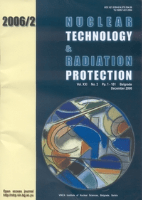
Nuclear Technology & Radiation Protection
Pioneering research for a safer nuclear future.Nuclear Technology & Radiation Protection is a distinguished open-access journal published by the VINCA Institute of Nuclear Sciences, Serbia, dedicated to advancing knowledge in the fields of nuclear energy and radiation safety. Since its inception in 2002, the journal has been an essential resource for researchers, professionals, and students, offering a platform for the dissemination of high-quality research that contributes to the safe and efficient use of nuclear technology. With an impressive Q2 ranking in both the Nuclear Energy and Engineering and Safety, Risk, Reliability and Quality categories for 2023, the journal reflects a commitment to excellence and relevance within its scope. It serves as a pivotal forum for sharing innovative findings, addressing current challenges, and contributing to the global discourse on nuclear safety and technology. The journal is indexed in Scopus, enhancing its visibility and impact in the academic community. By facilitating unrestricted access to its articles, Nuclear Technology & Radiation Protection continues to foster collaboration and engagement among scholars in the nuclear science domain.
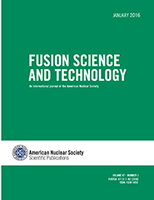
FUSION SCIENCE AND TECHNOLOGY
Transforming challenges into opportunities in fusion science.FUSION SCIENCE AND TECHNOLOGY is a leading peer-reviewed journal published by Taylor & Francis Inc., dedicated to the advancement of knowledge in the fields of nuclear science, engineering, and fusion technology. With an impact factor that reflects its growing significance, this journal provides a platform for innovative research that addresses the challenges and opportunities within Civil and Structural Engineering, Materials Science, Mechanical Engineering, and Nuclear Energy and Engineering. Its open access option facilitates wider dissemination of groundbreaking research, enhancing visibility and accessibility for researchers, professionals, and students alike. As a member of the Q2 and Q3 Quartiles across various categories—demonstrating its reputable standing among peers—the journal plays a crucial role in fostering collaboration and sharing the latest scientific discoveries in fusion and related technologies from 2001 until 2024. This makes it an essential resource for anyone engaged in the multidisciplinary aspects of fusion science, contributing to the development of sustainable energy solutions.
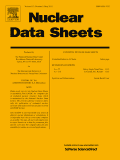
NUCLEAR DATA SHEETS
Unveiling the Universe: Data-Driven Insights in Nuclear Physics.NUCLEAR DATA SHEETS is a premier journal published by Academic Press Inc. Elsevier Science, dedicated to advancing the field of nuclear and high-energy physics. With an impressive impact factor and a distinguished Q2 ranking in the pertinent category as of 2023, this journal is recognized for its significant contributions to the synthesis and dissemination of nuclear data, serving as an essential resource for researchers, professionals, and students alike. The journal has been in continuous publication since 1971, making it a cornerstone of knowledge in the discipline as it converges into 2024. Researchers can explore a plethora of meticulously curated articles that cover the latest findings, theoretical advancements, and experimental results in nuclear data, with the objective of fostering collaboration and innovation within the scientific community. While currently not open access, its publications are accessible through institutional subscriptions, ensuring a wide reach amongst academic and research institutions worldwide. With a high Scopus rank of #10 out of 87 in its field, NUCLEAR DATA SHEETS remains an authoritative source that is instrumental in shaping the future of nuclear physics research.

Radiation Detection Technology and Methods
Pioneering Research for Enhanced Energy SecurityRadiation Detection Technology and Methods is a prominent academic journal published by Springer Singapore Pte Ltd, dedicated to advancing the field of nuclear and high-energy physics, as well as nuclear energy and engineering. Established in 2017, this journal provides a platform for the dissemination of pioneering research and innovative methodologies in radiation detection technology. As of 2023, it holds a commendable Q2 ranking in both the categories of Nuclear and High Energy Physics and Nuclear Energy and Engineering, underscoring its significance in fostering scholarly discourse within these vital fields. With ISSN 2509-9930 and E-ISSN 2509-9949, the journal aims to cater to a diverse audience of researchers, professionals, and students, emphasizing open access to knowledge. The journal's contributions are particularly crucial for those engaged in the development of safer and more efficient radiation detection techniques, ultimately bridging the gap between theory and practical applications in energy security and health physics. For researchers seeking a dedicated outlet for their work, Radiation Detection Technology and Methods represents an invaluable resource and an opportunity to influence the future of radiation science.

JOURNAL OF RADIOANALYTICAL AND NUCLEAR CHEMISTRY
Transforming analytical chemistry for a safer tomorrow.JOURNAL OF RADIOANALYTICAL AND NUCLEAR CHEMISTRY, published by Springer, serves as a vital platform for the dissemination of research in the fields of analytical chemistry, nuclear science, and radiochemistry. With an ISSN of 0236-5731 and an E-ISSN of 1588-2780, this journal has been a beacon of innovation and scholarly communication since its inception, transitioning from converged years of 1977-1979 to its current continuity from 1984 to 2024. Positioned in the Q3 category for analytical chemistry and other related fields such as health, toxicology, and nuclear engineering, it boasts significant standings in the Scopus rankings, reflecting its relevance and impact within these disciplines. The journal emphasizes open access, encouraging broader accessibility to quality research, which is critical for students, professionals, and ongoing global scientific discussions. As a leader in its domain, the JOURNAL OF RADIOANALYTICAL AND NUCLEAR CHEMISTRY is committed to advancing the understanding of radioactive materials, environmental safety, and health applications, ensuring its readers remain at the forefront of emerging trends and discoveries.

EUROPEAN PHYSICAL JOURNAL A
Catalyzing Advances in High Energy Physics ResearchEUROPEAN PHYSICAL JOURNAL A (EPJ A), published by Springer, is a premier journal in the field of Nuclear and High Energy Physics, dedicated to fostering innovative research and scholarly communication within the scientific community. With an impressive impact factor that reflects its significant contribution to the discipline, EPJ A ranks in the Q1 category and boasts a Scopus rank of 24 out of 87, placing it in the 72nd percentile of its field for 2023. This journal, with its ISSN 1434-6001 and E-ISSN 1434-601X, embraces a commitment to open access, ensuring that cutting-edge research is accessible to a global audience. With coverage from 1998 to 2024, EPJ A continues to be a vital resource for researchers, professionals, and students alike, promoting collaboration, knowledge sharing, and advancements in the vast landscape of nuclear physics and high-energy interactions. Located in Germany with a representative address in New York City, this journal serves as a bridge for international scientific discourse.